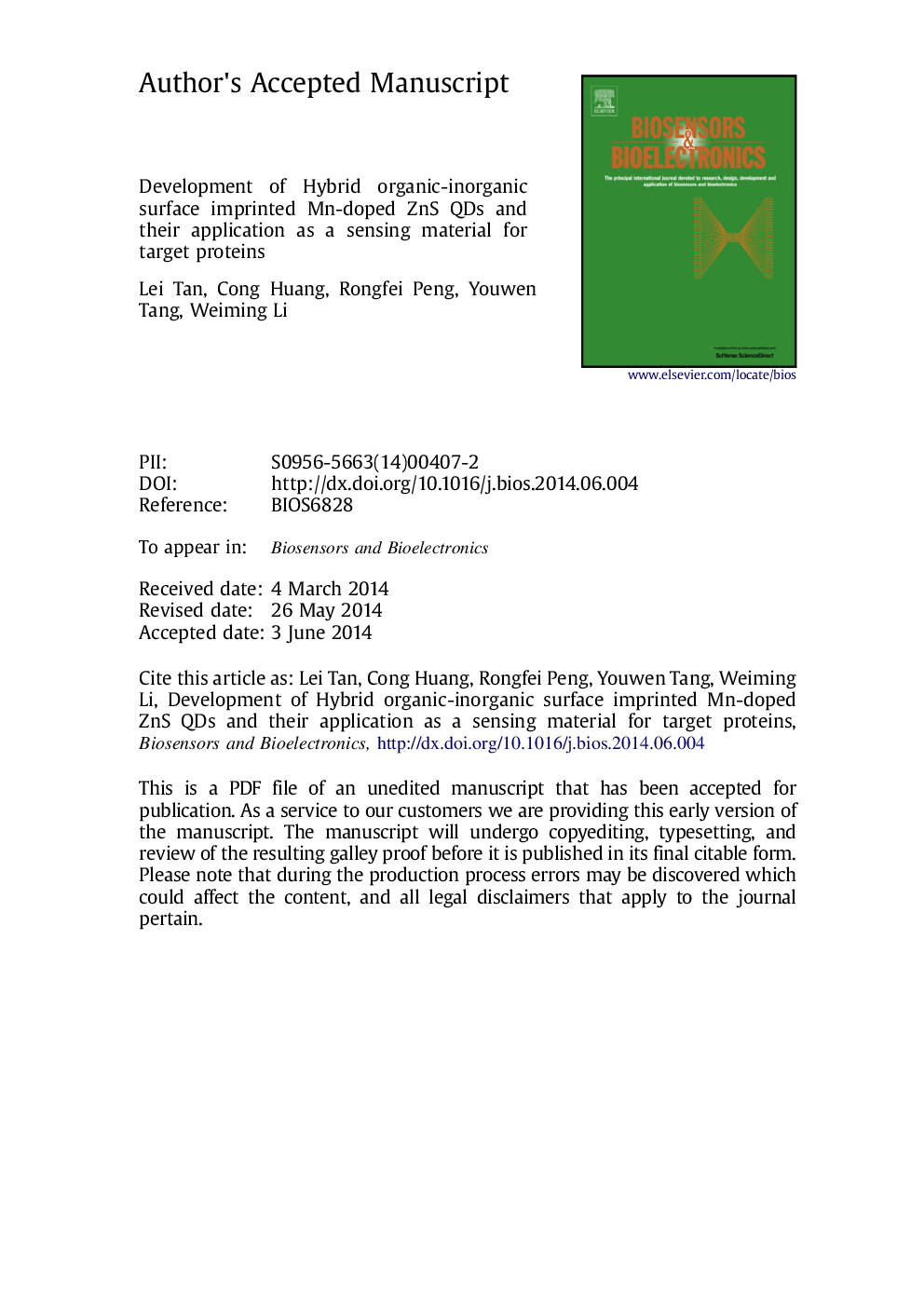| Article ID | Journal | Published Year | Pages | File Type |
|---|---|---|---|---|
| 7233502 | Biosensors and Bioelectronics | 2014 | 18 Pages |
Abstract
Applying molecular imprinting techniques to the surface of functionalized quantum dots (QDs) allows the preparation of molecularly imprinted polymers (MIPs) with accessible, surface exposed binding sites and excellent optical properties. This paper demonstrates a new strategy for producing such hybrid organic-inorganic imprinted Mn-doped ZnS QDs for specific recognition of bovine hemoglobin. The technique provides surface grafting imprinting in aqueous solutions using amino modified Mn-doped ZnS QDs as supports, acrylamide and methacrylic acid as functional monomers, γ-methacryloxypropyl trimethoxy silane as the grafting agent, and bovine hemoglobin as a template. The amino propyl functional monomer layer directs the selective occurrence of imprinting polymerization at the QDs surface through copolymerization of grafting agents with functional monomers, but also acts as an assistive monomer to drive the template into the formed polymer shells to create effective recognition sites. Using MIP-QDs composites as a fluorescence sensing material, trace amounts of bovine hemoglobin are signaled with high selectivity by emission intensity changes of Mn-doped ZnS QDs, which is embedded into the imprinted polymers.
Related Topics
Physical Sciences and Engineering
Chemistry
Analytical Chemistry
Authors
Lei Tan, Cong Huang, Rongfei Peng, Youwen Tang, Weiming Li,
